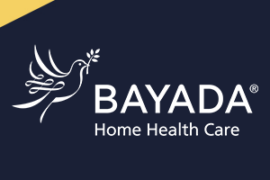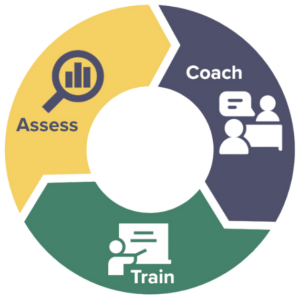Welcome to 2022, everyone! As many organizations kick off their first full workweek of the year, we know that many of you are already thinking about the nature of work and how to shift the environment you work in to be more welcoming, positive, and enjoyable.
Whether you’re a manager, a brand-new teammate new to the job, a seasoned frontline professional in your field, or an executive leading multiple teams and departments, here are a few first steps you can take to create a more positive workplace.
1) Stop and notice.
With the abundance of information readily available to us, it is not uncommon for a person to join a conversation and adopt new vocabulary – known as buzzwords – yet miss the core idea behind the word or phrase. That means we may stop to speak with a person then walk away misaligned about the topic of conversation. The first step to authentic engagement is authentic listening. When you talk to people, be open to what you may learn and how it may shift you or shift what you thought you knew.
2) Ask questions & welcome curiosity.
Nowadays, everyone is thinking and talking about the nature of work. In the modern workforce, it is important that we act intentionally in ways that allow each person to not only contribute but also be heard. This allows us, as colleagues and leaders, to more fully understand what is most important to our teammates and employees. From these conversations, we can learn more about how to build inclusion into the organizational culture.
3) Be intentional about building trust.
In a recent article from Harvard Business Review, “The Neuroscience of Trust,” Paul Zak discusses the impact of trust at work. As he explains, “compared with people at low-trust companies, people at high-trust companies report: 74% less stress, 106% more energy at work, 50% higher productivity, 13% fewer sick days, 76% more engagement, 29% more satisfaction with their lives, 40% less burnout.” In other words, trust creates a more positive workplace, which thereby increases bottom-line results across the organization.
Another study from Columbia University investigated the way that company culture can affect job turnover. The results, reported by Eric Siu in “It Really Pays to Have a Rich Company Culture,” showed that “the likelihood of job turnover at an organization with rich company culture is a mere 13.9 percent, whereas the probability of job turnover in poor company cultures is 48.4 percent.” That’s almost 350% times greater retention.
4) Set clear boundaries.
In a recent two-part podcast, Brene Brown breaks down that defining clear boundaries is the beginning of building trust. At work, this might mean boundaries around language, time, the topic of conversation, or more. For instance, you might clearly communicate when and how teammates can add work items to your day, when you will and will not answer emails or text, and which are the most respectful words you’d like people to use when describing you.
In light of the ongoing global pandemic and continuing conversations about the future of work, creating a more positive workplace is top of mind for many professionals this year. One great first step is understanding how our interpersonal interactions contribute to workplace culture at large, and how we can be more intentionally inclusive to create a more enjoyable workplace.














